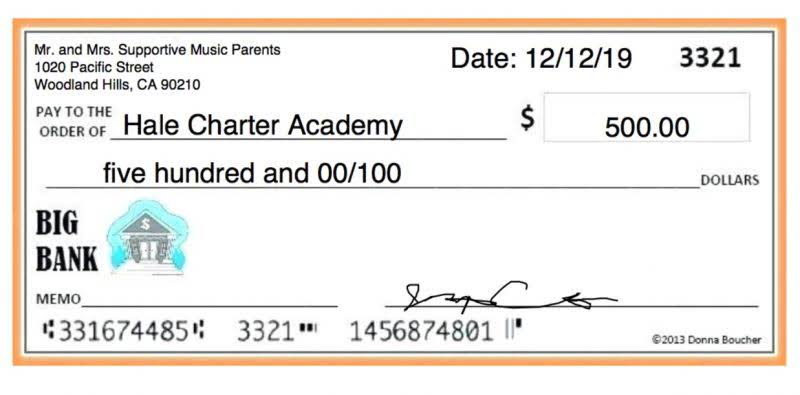I simply had to input my email, name and phone number into a simple sign-up form. Once I finalized the invoice, I could click the “send to” button at the top of the invoice and input an email address, a subject and a message to send the invoice. Or, I could click “share via link” to generate an invoice link sendable via text, social media or some other communication channel. I clicked “edit dashboard” and was given the means to deselect reports I didn’t want to appear on the dashboard. Unfortunately, I was not able to add reports that I wanted to see there.
What’s the Best Free Accounting App for Small Businesses?
Finally, there are many online resources, such as accounting forums and blogs, that can teach you how to use accounting software. Despite these challenges, accounting software can be a valuable tool for businesses of all sizes. When choosing accounting software, it’s important to consider the needs of your business and compare different features to find the best fit. When choosing the best accounting software for your business, there are several factors you should consider, including price, features, the type of software you need and what your company’s specific needs are. All in all, I would say that this software is easy to use but I would have preferred it included some features it lacked, such as the ability to send payable invoices from the platform. It was also confusing at times, given that features I expected it to have were nowhere to be found, such as automated sales tax calculations on the invoice form.
Best for Bookkeeping Services
They can assist in budgeting, financial forecasting, and setting key performance indicators (KPIs) to guide business strategy and facilitate growth. Furthermore, they can offer advice on cost reduction, revenue enhancement, and profitability improvement strategies, contributing to the startup’s long-term success. ZarMoney earns a 4.7-star rating on Capterra with 83 user reviews and a 4.8-star rating out of 24 user reviews on G2.
Best Accounting Software for Small Businesses
After all, accounting helps you make the daily business decisions required to make your business financially function and grow. Welcome to startup accounting 101 – accounting tips for startups that will help you choose among the best accounting firms for your startup business. Virtual, outsourced, and online are often used interchangeably when referring https://thefloridadigest.com/navigating-financial-growth-leveraging-bookkeeping-and-accounting-services-for-startups/ to bookkeeping and accounting. However, a virtual bookkeeper or virtual accountant can sometimes refer to accountants or CPAs who work out of their homes and contract out their services individually. In contrast, outsourced bookkeeping and accounting nearly always refers to accountants with an accounting firm who handle your books from their own office.
How do I find a startup accountant?
Zoho Books is surprisingly affordable, and it even has a free version. Overall, though, Zoho Books is best for businesses that use other Zoho applications, but its appeal isn’t limited to such cases. We also recommend it to larger small businesses, growing businesses, and established businesses that want its customizability, depth, and usability.
Other companies we considered
While you’re thinking about your money, you might also like to consider our reviews of online payroll services and personal finance apps. Record templates vary in complexity, so you need to understand the differences before you go with one accounting service or another. Some, such as Patriot Software Accounting Premium, simply let you maintain descriptive product records. Others, such as Intuit QuickBooks Online, do more, like asking how many of each product you have in inventory when you create a record and at what point you should be alerted to reorder. Next, they actively track inventory levels, which provides insights into selling patterns and keeps you from running low. Intuit QuickBooks Online is expensive, so it’s most appropriate for small businesses with a technology budget.
- Because many features had submenu items, it was not always instantly clear where to go to access needed features.
- One of the best changes in innovative accounting firms is structuring fees based on the firm’s value to the business or entrepreneur.
- First, they should be assigned a category, such as office expenses, utilities, and travel.
- Nonetheless, if you’re looking for the highest quality and most comprehensive service offered by an online accounting firm, then inDinero is an attractive option.
- Founders need an accounting partner who’s done it before for technology startups.
- Paro uses a multi-step vetting process to review the applications they receive and build a database of thousands of CPAs, financial analysts, internal auditors, finance vice presidents, and bookkeepers.
The average monthly cost of online accounting services varies significantly depending on the type and scope of services offered. Generally, most companies offer packages starting at around a few hundred dollars per month, with more comprehensive services costing up to thousands of dollars per month. Virtual and outsourced bookkeeping and accounting services are a happy medium between do-it-yourself software and pricey in-house bookkeeping. If that description fits what you’re looking for, one of the nine best virtual bookkeeping providers can save you time, money, and stress. Bookkeeper360 offers a pay-as-you-go plan that costs $125 per hour of on-demand bookkeeping support. It’s an ideal plan for businesses that need minimal monthly support, though if you want more than two hours of help a month, you’ll save more money simply going with a service like inDinero or Bench.co.
You need to get the information you need to make decisions and to ensure the utmost of financial health. Kruze’s team of professional bookkeepers will work with you to find the financial delivery date that meets your needs. Your accountant monitors your financials and ensures your compliance documents are in place and accurate. Your accountant should also be available to answer your questions and help you address any issues before they become larger problems.
If you don’t know the difference between financial statement analysis and financial forecasting, you may want to consider seeking some help. If you’re a brand-new business, chances are you don’t have any tax returns yet. However, once you accounting services for startups do, those returns must be filed away and kept for at least three years, although it may be a good idea to keep them longer. You’ll also want to keep track of those smaller expenses such as parking fees, postage, printing, and mileage.
Accounting helps in managing cash flow, ensuring the company has enough to cover immediate and future costs. Startups are subject to various financial regulations and tax laws. Proper accounting ensures that a startup is compliant with these rules, thereby avoiding potential fines or legal issues. By analysing past expenditure and income data, startups can predict future financial needs and adjust budgets accordingly. I was so impressed with how quickly AccountsPro responded to my tax and accounting questions.
The Ascent, a Motley Fool service, does not cover all offers on the market. With the advent of online banking, bulky bank statements are a thing of the past. Comparatively, accounting takes these financial records and interprets them for various use cases, including communicating with investors, filing taxes, and monitoring the financial performance of your company. For most startups, you don’t need 40 hrs/wk of work from an internal finance hire or team, especially when you first hire them. Fractional work, like Graphite, provides a much more efficient approach, as you are only paying for the exact effort you need at that moment in time. You also don’t pay us for benefits, downtime or vacations, so our cost tends to be much more efficient than hiring an internal team member.
The Starter plan starts at $499 per month for companies with monthly expenses between zero and $15,000. The Core plan starts at $699 per month and includes expedited books delivery and monthly phone reviews. Pilot offers custom pricing that includes support for multiple entities, accounts receivable, and payable reporting along with a fully customizable chart of accounts. In addition, Pilot performs automatic transaction imports, monthly account reconciliations, and cash forecasting. Inventory tracking, accounts payable and receivable reporting, as well as tax preparation and filing, are add-on options for an additional fee.…


 …
…